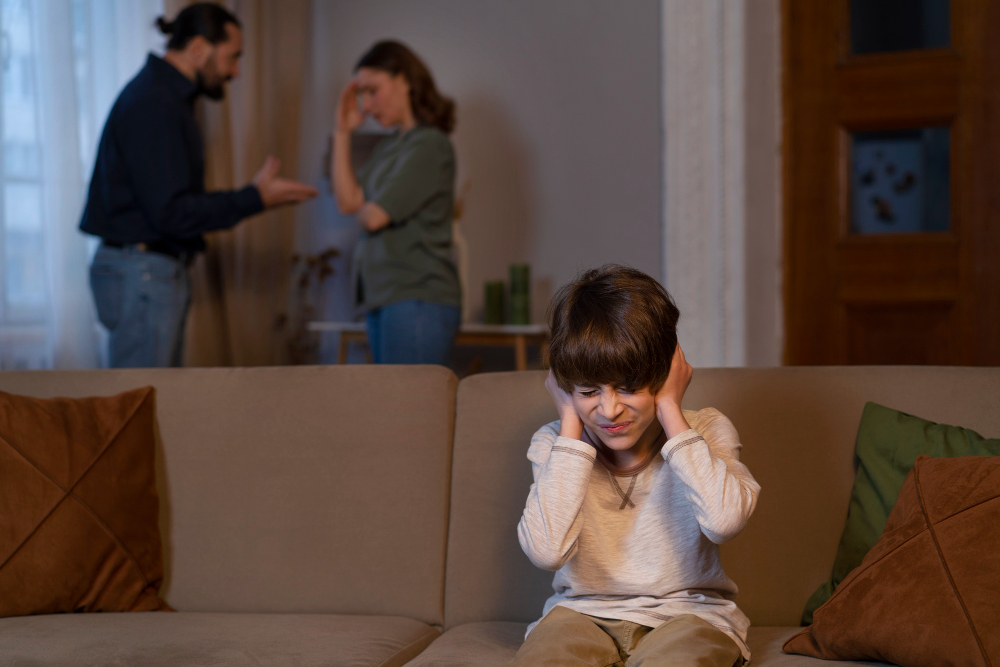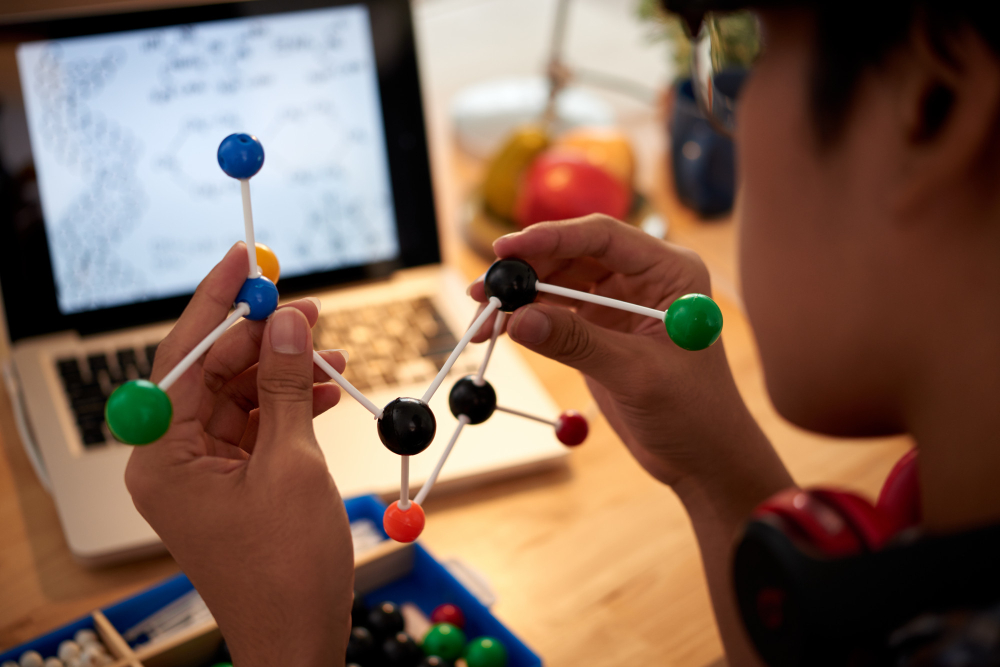The Science Behind “Children Mirror What They See”

From the earliest months of life, children are wired to observe, absorb, and imitate the behavior of those around them. This is not just anecdotal; it is deeply rooted in neuroscience, child psychology, and developmental biology.
Mirror Neurons, discovered in the 1990s, are specialized brain cells that activate both when we perform an action and when we observe someone else doing it. This biological system allows children to literally “mirror” facial expressions, language, tone, gestures, and emotional responses.
Key Insights:
Between the ages of approximately 2 and 6, a child’s brain activity is dominated by theta brain waves, a frequency associated with deep learning, imagination, and emotional absorption. In this state, children are neurologically primed to internalize behaviors, language, emotional patterns, and social cues from their environment.
During these early developmental years, children subconsciously absorb and mirror the emotional climate and relational patterns around them. This period forms a crucial foundation for their future emotional regulation, self-esteem, and worldview
Everything a child sees is a lesson. Everything a child hears becomes an instruction. Every feeling they absorb becomes a memory.
What Parents Model, Children Become. Children do not only hear what parents say, they watch how parents live.
When a parent yells, lies, criticizes others, or behaves harshly, children learn that these are acceptable ways to communicate or handle stress. Conversely, when parents model patience, empathy, and assertive communication, children internalize these healthy behaviors.
Common Parental Behaviors Children Mirror:
- Aggression or shouting
- Negative self-talk
- Blaming or complaining
- Avoiding emotional expression
- Poor conflict resolution
- Disrespect towards others (spouse, domestic workers, elders)
Studies Show:
- Children raised in homes with hostile or critical parenting are more likely to develop anxiety, aggression, or low self-esteem.
- Children of mindful, emotionally intelligent parents show higher levels of self-regulation, empathy, and academic success.
Children don’t become what we tell them — they become what we show them every day.

The Power of Environment & Exposure
Beyond parental behavior, the environment a child grows up in — including people, social media, entertainment, school culture, and even extended family — becomes part of their subconscious blueprint.
Research shows that children who grow up in emotionally unstable environments are at a greater risk for developing behavioral disorders.
What We Expose Our Children To:
- Violent or toxic TV shows
- Dysfunctional or abusive relationships
- Friends who bully, gossip, or disrespect
- Adults who are racist, sexist, manipulative, or unethical
- Social media influencers promoting vanity, rebellion, or instant gratification
Emotional trauma from what children witness (even if not directed at them) can lead to:





How TransformationWithin Helps Parents Transform Their Parenting
Our signature methods help you parent with purpose, not pressure — using connection, neuroscience, and emotional clarity.
🪞 The Mirror Method – We help parents recognize how their emotional energy, habits, and tone silently shape a child’s identity. Learn to turn unconscious reactions into conscious healing responses
🔍 Invisible Scripts Decoder – Unpack the hidden beliefs driving your parenting — like “children should be seen, not heard” — and rewrite them with clarity and compassion, not shame or blame.
🧠 Emotion-Coaching Without Overwhelm – Through bite-sized, science-backed lessons, you’ll learn to help your child navigate big emotions without yelling, bribing, or shutting them down
❤️ Connection Reset Rituals – Simple, daily 5-minute rituals to rebuild trust after conflict, soften emotional walls, and deepen the bond — even when you feel like you’ve “messed up.”
🛡️ Digital Defense & Emotional Filtering – Tools to protect your child’s nervous system in a hyper-digital world. Learn to prevent screen-related dysregulation and model healthy tech behavior.
🧘♀️ Self-Regulation for Grownups – You’ll master nervous system regulation techniques so you can discipline from calm, not chaos. Because a calm parent raises a calm child.
🧭 Boundaries Without Breaking Connection – Learn how to set firm, respectful limits without resorting to fear, emotional shutdowns, or power struggles.
🌀 Emotional Rewiring Exercises – Release guilt, fear, or burnout from your parenting journey with our neuro-emotional tools — and show up with clarity, presence, and confidence.
🗺️ Behavioral Clarity Maps – We teach you to decode behavior as communication, not defiance. Our visual guides help you respond to your child’s true needs, not just their actions
💓 Heart-Led Transformation Programs – Our on-demand coaching programs are designed for flexibility, depth, and self-paced growth — free from pressure, judgment, or shame.
Helping Children Identify Toxic People Early
Teaching children how to recognize toxic behaviors — in peers, adults, or authority figures — is a vital life skill that safeguards their emotional, mental, and physical well-being.
🚩 Signs of Toxicity Children Should Learn to Spot:
- People who pressure them to do things they’re uncomfortable with
- Friends who mock, exclude, or betray
- Adults who manipulate, bribe, or silence
- Individuals who ignore boundaries or lack empathy
👨👩👧 How Parents Can Teach This Skill:
- Use stories, books, or real-life scenarios to highlight unhealthy behavior patterns
- Build emotional language: Ask, “How did that make you feel?”
- Practice role-playing: “What could you say if someone made you uncomfortable?”
🌱 Why This Matters
Children who learn to recognize and respond to toxic behavior early grow into emotionally intelligent, resilient adults who can set boundaries, say “no,” and form healthy, respectful relationships

Grave Mistakes Parents Make in Front of Children
Even the most loving parents can unintentionally make critical errors that silently shape a child’s identity, emotional development, and worldview.
Arguing in front of your child – Leads to insecurity, emotional distress, and fear around relationships.
Criticizing or shaming publicly – Damages a child’s self-esteem and sense of worth.
Speaking negatively about others – Teaches children to judge, gossip, or develop a critical inner voice.
Lying or breaking promises – Breaks trust and normalizes dishonesty.
Constant device use – Models emotional unavailability and disrupts connection.
Poor self-regulation under stress – Creates anxiety and fear around conflict and emotional expression.
Raising Conscious Communicators
Communication goes beyond words — it’s about tone, timing, body language, and emotional presence.
👀 How Children Learn to Communicate:
Children absorb communication patterns by watching how you:
- Speak to them during conflict
- Respond to disappointment
- Validate or dismiss their emotions
- Apologize and take ownership of mistakes
A child who is never listened to may grow into an adult who doesn’t listen — or who feels unworthy of being heard.
🧭 What to Model:
✅ Active listening
✅ “I” statements (e.g., “I feel upset when…”)
✅ Calm tone during correction
✅ Conflict resolution without shouting
✅ Apologizing and taking responsibility
🌱 The Outcome
Children raised with respectful, clear communication learn to:
- Express themselves with confidence
- Regulate their emotions
- Build healthy relationships
- Strengthen their emotional and social intelligence

How Childhood Programming Shapes Adult Life
By the age of 7, a child’s emotional and belief system — their internal operating software — is largely formed. This programming silently influences their adult thoughts, relationships, and behaviors.
⚠️ Why This Matters:
- A child exposed to constant criticism may grow into a self-critical adult.
- A child made to feel unsafe expressing emotions may struggle with emotional intimacy.
- A child shamed for mistakes may become a perfectionist, afraid to fail or take risks.
🧩 Subconscious Beliefs Formed in Childhood
- “I must be perfect to be loved.”
- “My voice doesn’t matter.”
- “Love means pain.”
- “I have to stay quiet to stay safe.”
🔬 Scientific Insight
According to Dr. Bruce Lipton,
95% of our behaviors and beliefs are driven by subconscious programming — most of which is formed before age 7.”
💡 The Takeaway
Early emotional environments don’t just influence childhood — they define the adult experience unless consciously reprogrammed.
Emotional Contagion – Why Your Mood Shapes Theirs
Children don’t just imitate what you say, they absorb how you feel. This is called emotional contagion: A scientific phenomenon where people unconsciously “catch” the emotional energy of those around them — especially in close relationships.
When Parents are chronically stressed, anxious, depressed or angry – Children may:
- Experience increased cortisol (stress hormone)
- Become more reactive, anxious, or withdrawn
- Develop a distorted understanding of what “normal” emotions look like
👀 Children Learn Emotional Habits By Watching You
- How you calm yourself when overwhelmed
- How you handle disappointment or rejection
- Whether you express joy, patience, and gratitude
🛡️ Emotional Safety = Secure Attachment
At the heart of healthy development lies one thing: Emotional Safety
When children feel safe to express, to mess up, and to be truly seen, they form what psychology calls secure attachment.
✅ Securely Attached Children Are:
- More resilient under stress
- Better at forming healthy relationships
- More successful academically and emotionally
- Less prone to anxiety, depression, or co-dependency
🚫 What Causes Insecure Attachment?
- Emotional neglect (“Stop crying”/ignoring feelings)
- Conditional love (“I love you if you behave”)
- Harsh punishment without emotional repair
- Emotional inconsistency or unpredictability
🌱 When parents regulate, children feel safe. Calm is contagious — and so is chaos.
Our Programmes
Our coaches provide comprehensive interventional support for students through both group and individual program options.
Get In Touch
Reach out to learn more about how we can help, or if you have any questions or concerns
